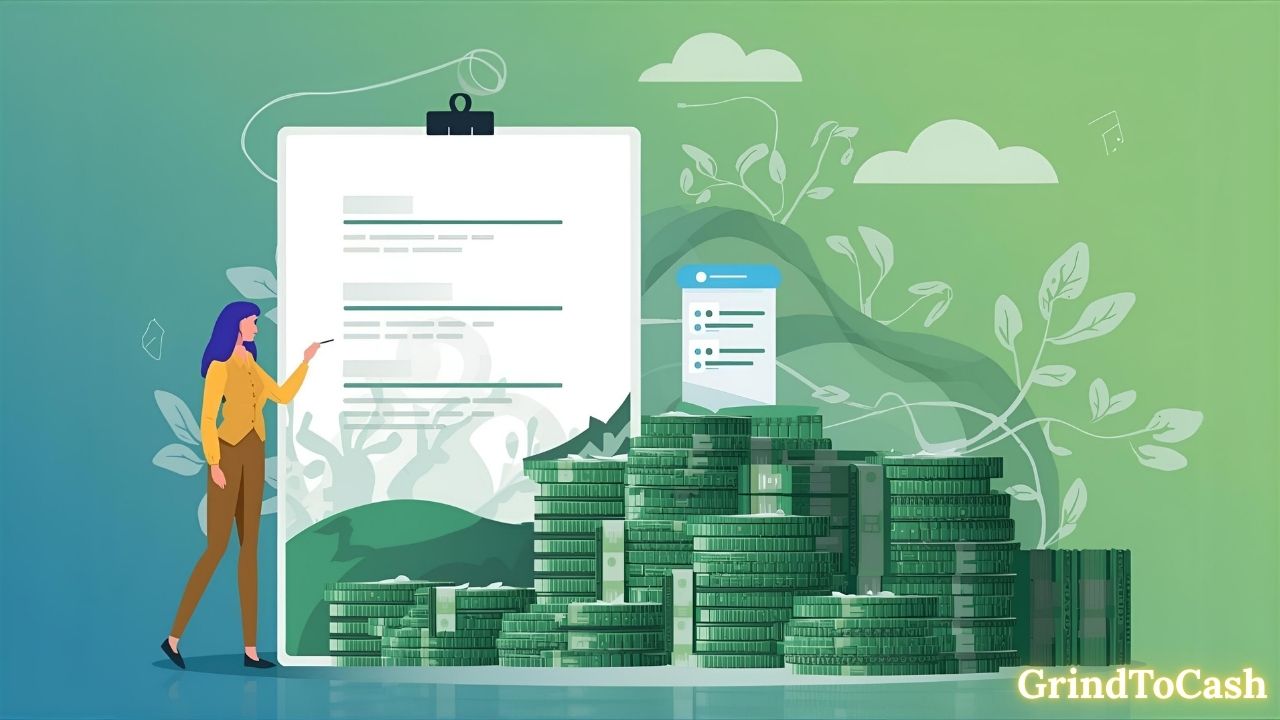How to Protect Your Capital in a Crypto Crash
Learn how to protect your capital during a crypto crash. Discover risk management tips, safe strategies, and smart moves to survive market downturns.
By Yaser | Published on September 26, 2025

Assess the Market and Your Mindset
Before taking any action, pause and assess both the market and your own emotional state. First, check price action, volume, and major support levels. Then, look at simple macro signals such as dollar strength and bond yields. Meanwhile, ask yourself whether you are trading emotionally or following a plan. Importantly, a calm mindset reduces careless decisions; therefore, combine what the market shows with what your plan allows. Finally, write down your immediate goals: preserve capital, reduce risk, or selectively accumulate — and stick to that priority until conditions change.
Stay Calm and Avoid Panic
Panic drives rushed selling and poor decisions. When prices plummet, take deep breaths, step away from screens briefly, and avoid immediate “all-in” moves. In practice, traders who pause and review their plan tend to cut smaller losses. Consequently, calm behavior often yields better outcomes than reactive actions. Use simple rules — e.g., wait 30 minutes after a sharp move before changing a plan — to prevent emotion-led mistakes.
Check Macro and On-Chain Signals
Combine macro data with on-chain metrics. For example, monitor stablecoin supply, exchange inflows, and open interest on derivatives. If exchange balances rise and stablecoin inflows fall, selling pressure may continue. Similarly, macro surprises like stronger GDP figures can shift risk sentiment fast. Thus, use both lenses together to form a balanced market view rather than relying on headlines alone.
Set Realistic, Measurable Goals
Decide whether your priority is capital preservation or opportunistic accumulation. Write measurable rules: maximum drawdown you accept, position size limits, and conditions for re-entry. By setting concrete thresholds, you transform emotional decisions into repeatable actions. This clarity reduces second-guessing and helps you follow through when the market becomes noisy and stressful.

Risk Management Fundamentals
Risk management is the core skill in a crash; without it, even skilled traders fail. Begin by defining total portfolio risk and the maximum you will risk on any single position. Then, set stop-loss rules and time-based exit conditions. Also, maintain a cash buffer and avoid illiquid bets. Importantly, understand the difference between temporary price dips and structural market changes. Finally, review and document every trade during the crash so you can learn; this discipline keeps risk measurable and manageable.
Define Risk Per Trade
Set a fixed percentage of your portfolio you are willing to risk per trade — typically 1–3% for many traders. This rule caps losses and prevents a single failure from wrecking your account. Moreover, use dollar amounts, not just percentages, so the rule is concrete. By limiting exposure, you ensure survival and the ability to trade again after a drawdown.
Use Stop-Losses Wisely
Place stop-loss orders at logical technical levels rather than arbitrary percentages. For instance, use recent swing lows or order-book clusters as stop points. Additionally, avoid placing stops in obvious spots where whales or bots may hunt; instead, give trades enough room to breathe while protecting capital. Lastly, check whether stops are executed reliably on your chosen exchange in times of volatility.
Avoid Excessive Leverage
Leverage amplifies both gains and losses. During crashes, leveraged positions are often liquidated automatically. Therefore, reduce or eliminate leverage in volatile markets. If you must use margin, use minimal amounts and monitor positions frequently. Remember that survival is worth more than a risky attempt to recover losses quickly.

Position Sizing and Loss Limits
Position sizing decides how much of your capital is exposed to each trade. Use size rules tied to volatility and stop distance: the larger the stop, the smaller the position. Also set daily and weekly loss limits — when reached, stop trading and review. Furthermore, consider scaling in and out of positions instead of committing all capital at once. This approach smooths entry price and limits regret-driven mistakes. In short, disciplined sizing protects you from outsized drawdowns and keeps capital intact for future opportunities.
Percent-Based Positioning
Calculate position size by risk percentage and stop distance. For example, if you risk 1% of capital and your stop is 5% away, your position equals 0.2 of portfolio value. This math keeps risk consistent across trades and prevents accidental overexposure. Use a simple spreadsheet or the calculators on GrindToCash to automate these steps.
Daily and Weekly Loss Limits
Set hard daily and weekly loss caps (for example, 3% daily, 6% weekly). If you hit these limits, stop trading and reassess. This rule prevents emotional escalation and forces a cooldown period. In practice, many professional traders protect their accounts this way and return with a clearer plan after stepping back.
Rebalance and Scale Rules
Define rules to scale positions: add on strength, trim on weakness, or use time-based additions. For accumulation, dollar-cost averaging reduces timing risk. For active trades, scaling out reduces exposure as profits accrue. Importantly, predefine these rules to prevent impulsive changes under stress.

Diversify and Allocate to Safer Assets
Diversification reduces single-point failure risk. Allocate across top-tier cryptos, stablecoins, and other asset classes where appropriate. In a crash, high-quality, liquid assets usually outperform low-liquidity tokens. Also consider geographic and sector diversification: layer exposure to exchange tokens, staking assets, and other digital-native revenue models. That said, diversification is not a free lunch; reweighting should reflect your goals. For those using GrindToCash guides, follow recommended allocation templates to match risk tolerance and investing horizon.
Stablecoins and Cash Reserves
Keep a portion of capital in stablecoins or fiat to buy opportunities or meet withdrawals. Stable reserves act as dry powder when prices drop. Additionally, stablecoins on trusted platforms can earn modest yields while remaining liquid. However, evaluate counterparty and smart-contract risks before parking large sums.
Blue-Chip Crypto vs. Altcoins
Prioritize blue-chip assets like BTC and ETH for stability and liquidity. Altcoins may offer big upside, but they also carry higher downside in crashes. Use smaller allocations for speculative coins and increase due diligence during volatility. This balance preserves capital while allowing selective exposure to growth.
Cross-Asset Diversification
Consider non-crypto assets if you want lower correlation during crashes: cash, bonds or commodities. Although crypto often moves independently, macro stress can link markets. Therefore, mix assets to reduce total portfolio volatility and reduce the chance that a crypto-only crash wipes you out.

Use Stablecoins and Cash Management
Stablecoins are powerful tools in downturns. They provide liquidity, reduce volatility exposure, and let you seize buys quickly. However, stablecoin choice matters: prefer well-audited and widely used options. Additionally, managing cash flow prevents forced selling for expenses. Set auto-withdraw rules and maintain emergency funds outside exchanges. Finally, consider splitting funds across custody options so a single platform or smart contract failure cannot wipe your liquidity.
Keep Liquidity for Opportunities
Holding liquidity lets you buy during sharp drops rather than sell at low prices. Determine a target liquidity percentage based on your strategy — for example, 10–30% depending on risk tolerance. Liquidity also covers fees and margin requirements without liquidating core holdings in a fire sale.
Stablecoin Yield — Risks and Rewards
Earning yield on stablecoins can offset some drawdowns, but yields come with counterparty and contract risk. Compare centralized platform yields with DeFi options, and prefer audited, high-liquidity pools. Always understand lock-ups and withdrawal terms before committing large sums to yield strategies.
Avoid Illiquid Pools and Locked Funds
Avoid putting emergency liquidity into illiquid or long-lock pools. In crashes, you need fast access to funds. Therefore, maintain a portion of assets in immediately withdrawable accounts. If you use staking or locked products, keep a clear record of unlock dates and penalty rules to prevent surprises.

Hedging Techniques and Tools
Hedging reduces downside while keeping upside optional. Use simple tools first: inverse ETFs, short positions, or options protective puts. For advanced users, combine delta-neutral strategies or structured products. However, hedges cost money and need skills; therefore, use them sparingly and only when benefits clearly outweigh costs. GrindToCash recommends testing hedges in small amounts and learning via paper trading before live deployment.
Shorting and Inverse Products
Shorting via exchanges or using inverse ETFs can directly profit from declines and offset portfolio losses. Yet short positions need monitoring and can be costly if the market rebounds. Maintain strict risk rules and caps when using shorts, and be aware of borrow costs and margin.
Options for Downside Protection
Buying put options or using collars can cap downside while preserving upside potential. Options require understanding of expiries, strike selection, and premiums. For many investors, small, time-limited protective options provide peace of mind without overly limiting upside. Test small positions first.
Futures and Margin — Use With Caution
Futures provide leverage and hedging possibilities, but they carry liquidations risk. If you use futures to hedge, size positions conservatively and monitor funding rates. Avoid leaving large margin positions unattended during volatile times, and prefer reputable platforms with strong risk management features.

Security, Custody, and Platform Risks
In a crash, platform outages, withdrawal freezes, or hacks can cause losses beyond price moves. Therefore, secure custody is as important as trading strategy. Use hardware wallets for long-term holdings. For active trading, keep minimal funds on exchanges and choose reputable platforms with insurance and transparent audits. Moreover, enable multi-factor authentication and withdrawal whitelists. Protecting capital from operational risk is often the difference between recovery and total loss.
Cold Wallets and Hardware Security
Move long-term holdings to cold wallets and store seed phrases securely offline. Cold storage eliminates exchange counterparty risk. Additionally, use reputable hardware wallet brands and keep firmware updated. Finally, document your recovery plan so funds remain accessible if needed.
Choose Reputable Exchanges
Use exchanges with proven uptime, transparent reserve audits, and insurance where possible. During past crashes, weaker platforms experienced failures. Therefore, prefer exchanges with clear communication, adequate liquidity, and strong security records. Split active balances across multiple trusted platforms to reduce single-point failure risk.
Beware Smart-Contract and DeFi Risks
DeFi offers high yields but carries smart-contract risk, oracles risk, and DAO governance fragility. In crashes, exploit attempts and liquidity drains increase. If you use DeFi, prefer audited protocols, limit exposure size, and understand emergency withdrawal mechanics. GrindToCash guides can help evaluate protocol risk.

Practical Action Plan for GrindToCash Readers
Turn advice into actions with a clear checklist. First, stop and assess — use the market snapshot tools on GrindToCash. Second, implement position sizing and hard stop rules. Third, secure funds and move long-term holdings offline. Fourth, keep a liquidity reserve and track on-chain flows. Finally, document every decision and review weekly. This practical plan helps you act with discipline, avoid common pitfalls, and position yourself to benefit when markets recover.
Step-by-Step Checklist
Create a short checklist: 1) Pause and breathe; 2) Review open positions and stops; 3) Move core holdings to cold storage; 4) Keep liquidity ready; 5) Avoid new leverage. Follow the list each time volatility spikes. A checklist prevents chaotic decisions and keeps your capital protection plan consistent.
Use GrindToCash Guides and Tools
Leverage GrindToCash resources: risk management templates, calculators, and strategy walkthroughs. Use our step-by-step tutorials to set stops, size positions, and evaluate protocols. The site’s practical tools help you apply theory to real trades quickly and safely, so you make smarter moves under pressure.
Maintain a Long-Term Learning Mindset
Crashes are painful, but they are also lessons. Track mistakes, adapt rules, and keep learning. Over time, disciplined investors outperform emotional traders. Use downtime to study projects, refine allocations, and prepare for the next market cycle with better processes and a stronger cash position.








